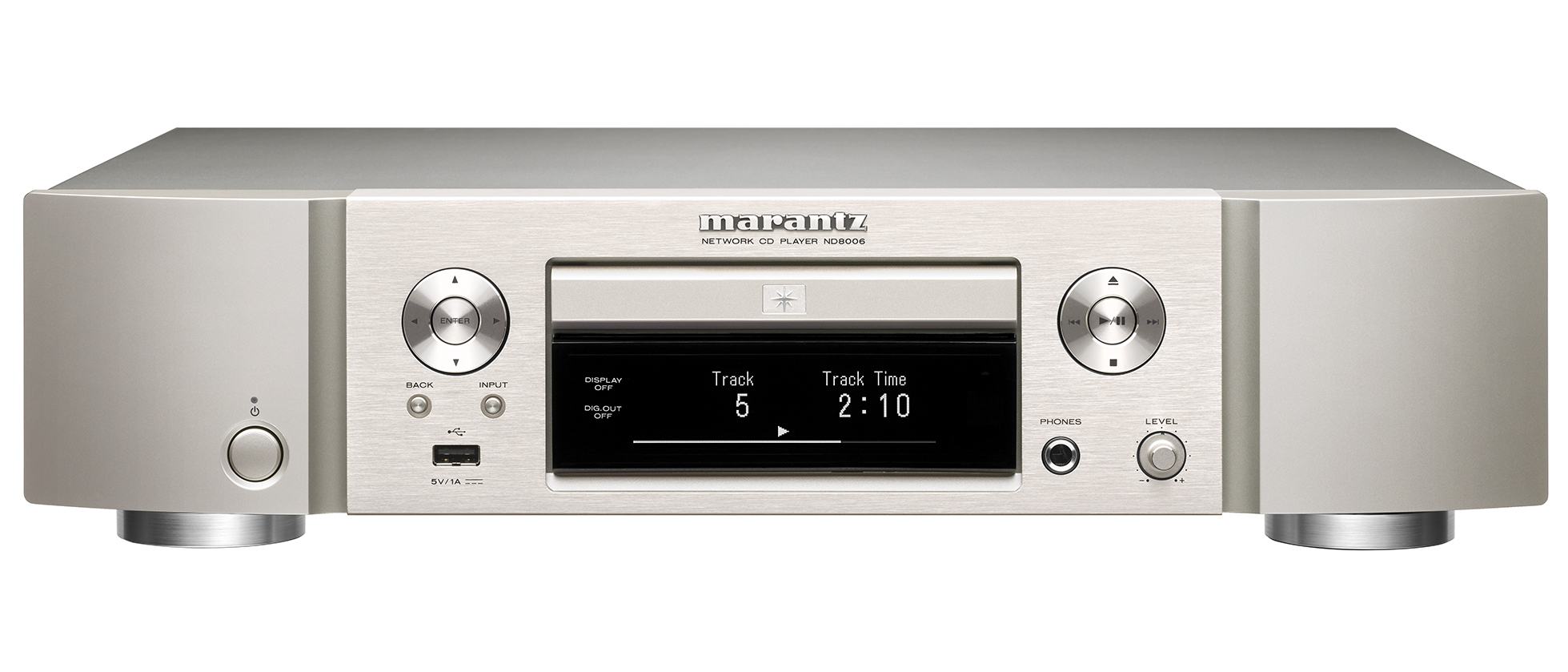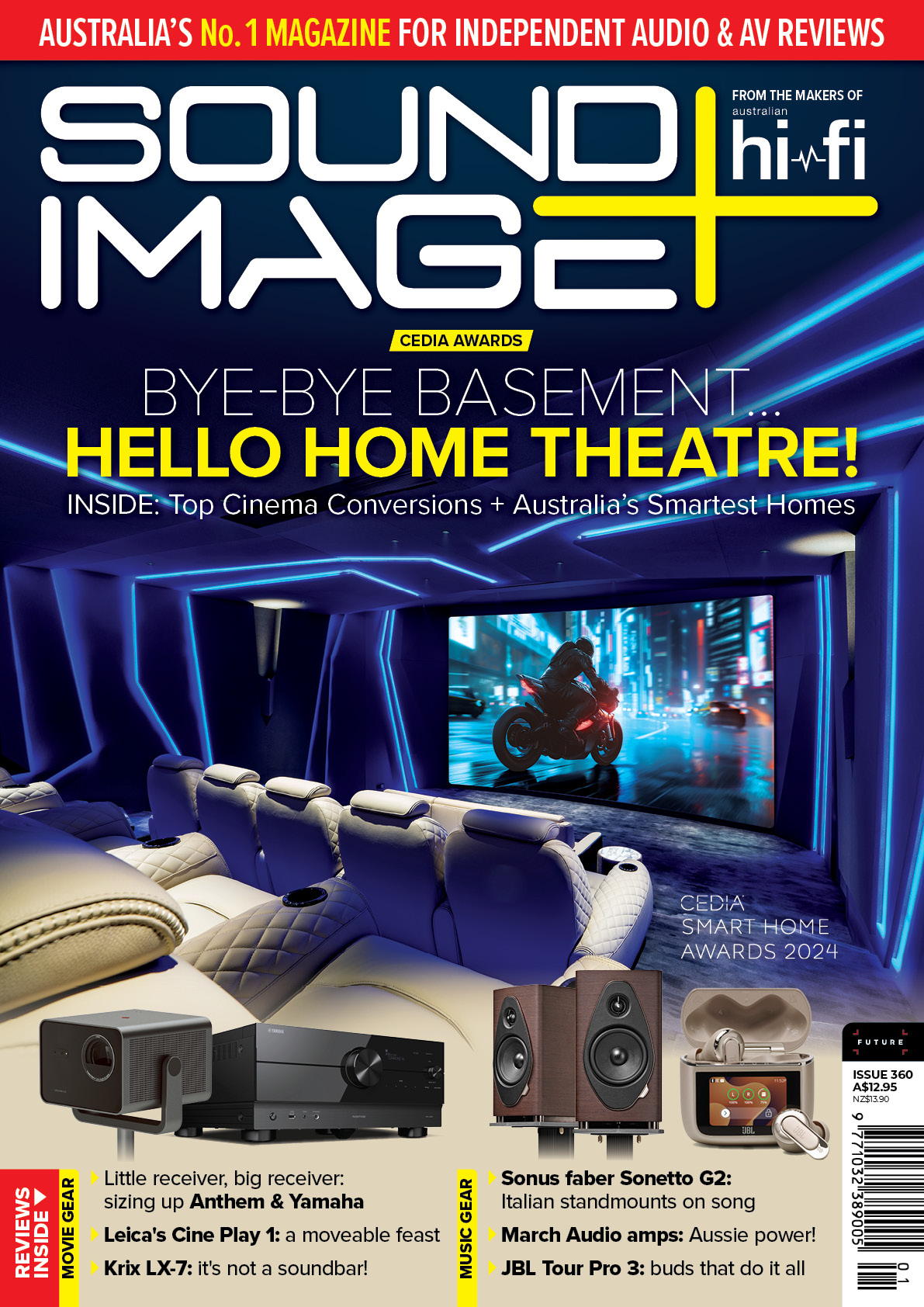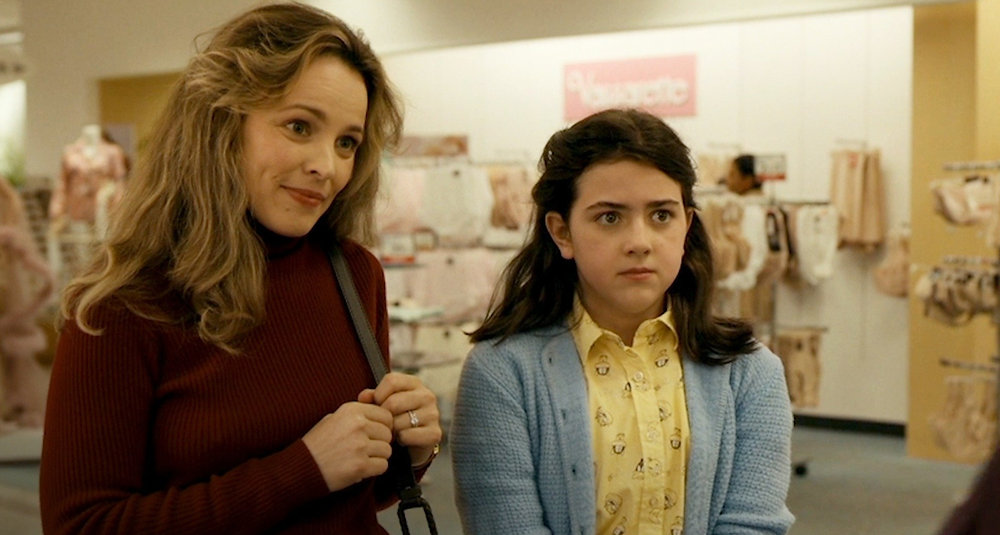Sound+Image Verdict
“A unique complete digital music source player”? Yes, we reckon the ND8006 ticks that box rather nicely.
Pros
- +
Digital sources fully covered
- +
Excellent DAC and audio
- +
HEOS a huge bonus
Cons
- -
No remote control of headphone volume
Why you can trust What Hi-Fi?
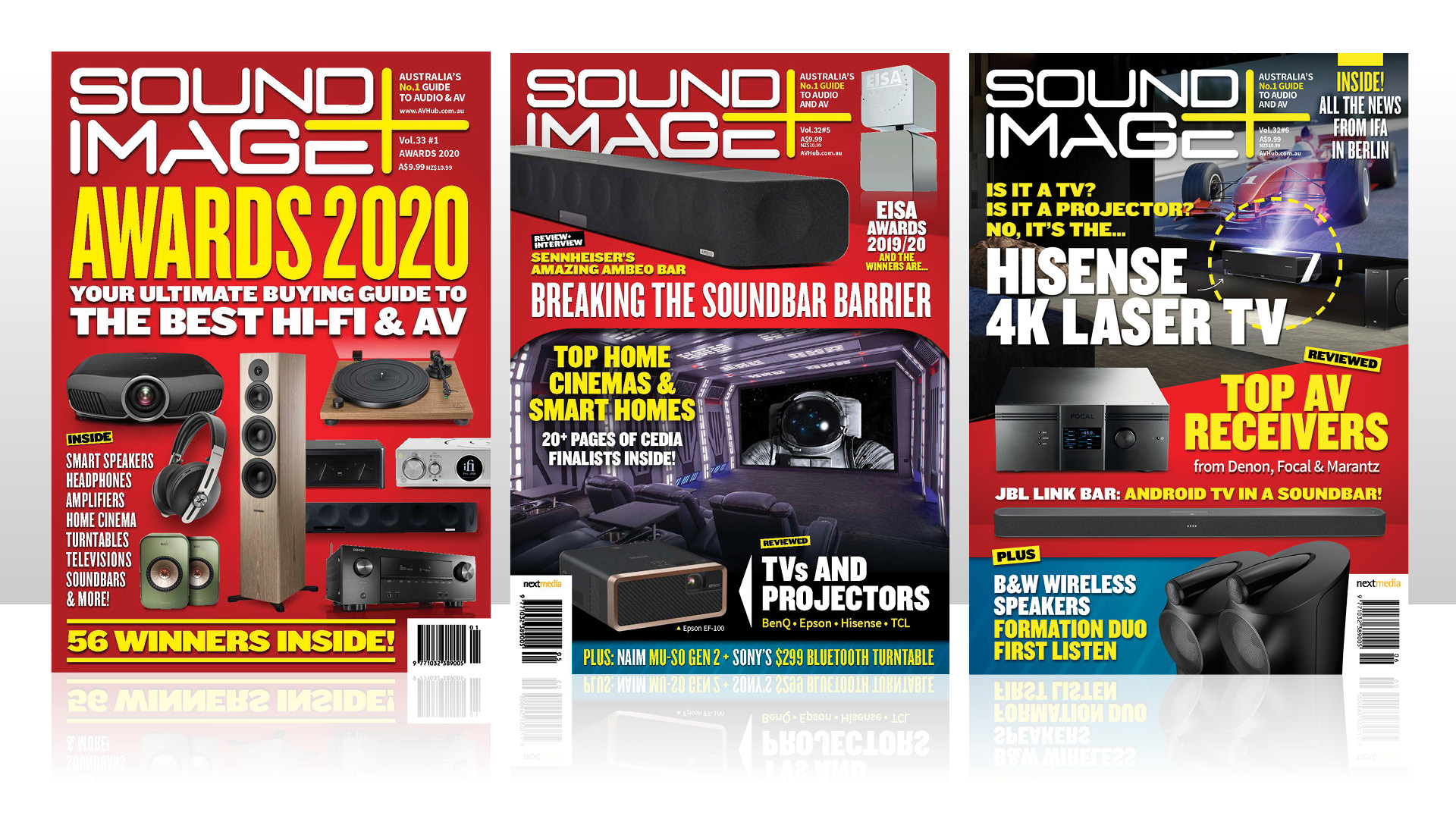
This review originally appeared in Sound+Image magazine, one of What Hi-Fi?’s Australian sister publications. Click here for more information on Sound+Image, including details on how you can subscribe.
It says ‘network CD player’ on the box, but Marantz’s byline for the ND8006 is that it is “a unique complete digital music source player”. That’s quite the claim in an age when digital sources are evolving every year, and with no shortage of manufacturers aiming to deliver the ultimate do-it-all product. So is the ND8006 really ‘complete’, and what makes it ‘unique’?
Equipment
We’ll list the extensive abilities in a moment (in a nutshell it’s a CD player plus DAC plus HEOS). Equally important, however, is the quality to which Marantz has designed this component. As you can see from the price, this is no entry-level unit. It’s solid, and it’s heavy for a source, with a rigid, double-layer chassis on the outside, a shielded toroidal transformer inside and a 3300μF block capacitor in the supply.
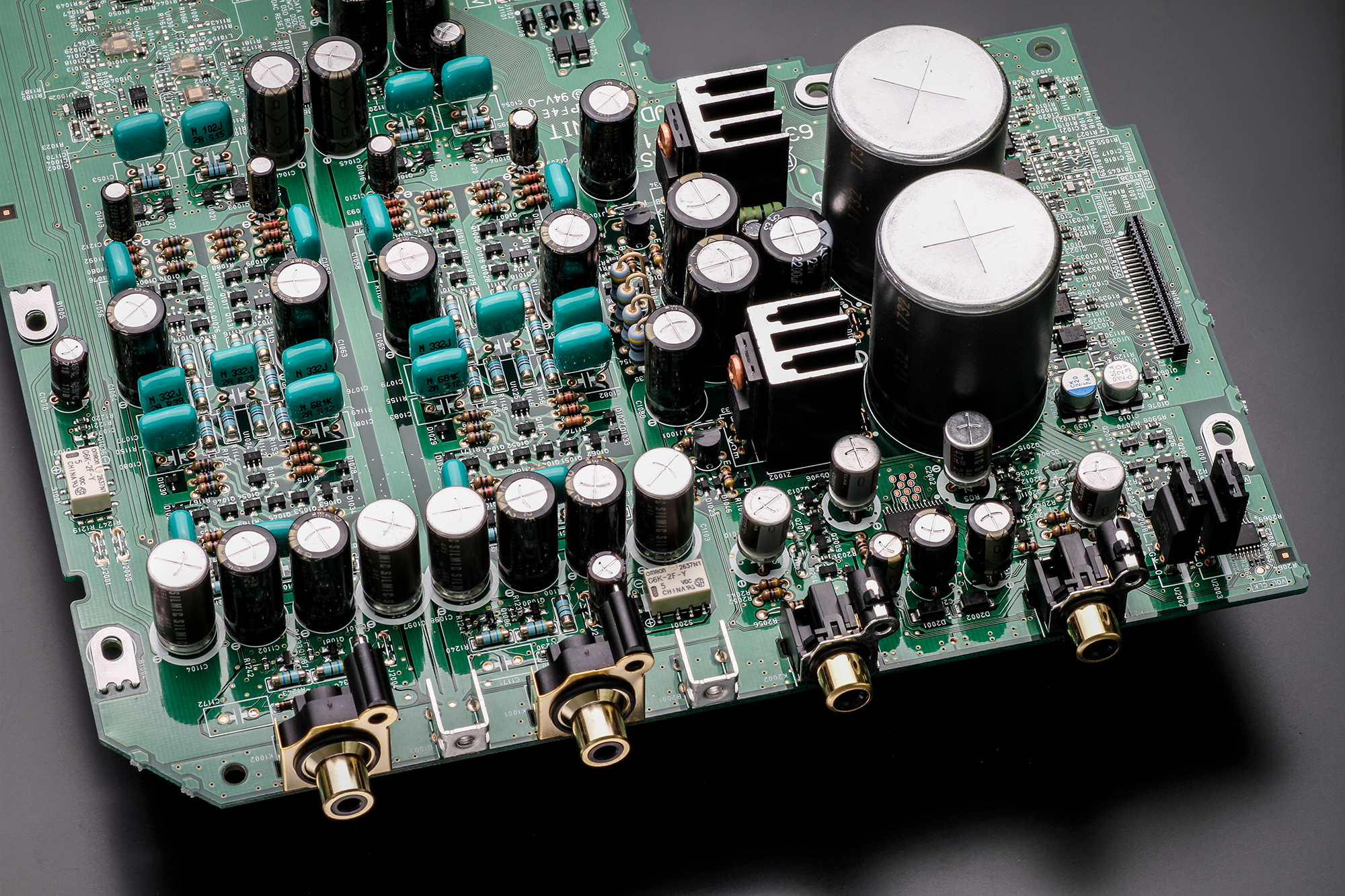
And it’s all built to Marantz’s high standards of audio circuitry. The analogue circuits include audiophile-grade film capacitors, electrolytic capacitors and cylindrical surface-mount MELF resistors, while the company’s Hyper-Dynamic Amplifier Modules (HDAMs) are used, rather than all-in-one ‘chip amplifiers’.
The digital conversion uses the audiophile-level ESS9016 Sabre DAC with dual crystal clocks, and the ground circuit for the digital inputs is isolated from the audio circuits to prevent noise via your PC connection in particular.
And while Marantz’s PM8006 might be the obvious partner in terms of amplification, this ND8006 does offer a variable output under the volume control of the remote and/or the HEOS app, so you could equally connect it directly to a power amp, or to a pair of active speakers.
That would, however, hinge on your system using digital-only sources, as analogue inputs are the one thing not on offer here. But look what you do get!
There’s a CD player, which gets a pretty brief description these days in Marantz literature next to all the other digital goodies, but is of course a high-quality tray-loading transport mechanism with all the accuracy you’d expect from Marantz’s 30+ years of experience in control and stabilisation. It plays CDs and recordable CDs (and MP3, WMA and AAC files burned to CD, if you must), though we note no SACD compatibility here... which points to the CD section being comparable to the Marantz CD6006, as you might expect, rather than its very highest players, which do support SACD.
It most certainly supports the DSD file-type as used on SACDs, however, when the NA8006 operates as a DAC, with its two optical inputs, one coaxial input, a USB slot on the front for sticks or drives, and the essential USB-B socket on the back for playing direct from your computer. There is also the choice of Ethernet or Wi-Fi networking, which then allows networking streaming as well. For all these the NA8006 can play high-res audio as well as CD quality and below, with slightly different top-outs depending on the input — you can play up to 24-bit/192kHz PCM and 2.8/5.6MHz DSD files from the optical, coaxial and USB slot inputs, or over the network, assuming your network speed supports it. From computer, however, this rises up to a thoroughly future-proofed 32-bit/384kHz maximum for PCM files and 2.8/5.6/11.2MHz DSD through the USB-B input.

Despite the potential to resolve frequencies up to 192kHz, the analogue audio circuitry limits output to a specified 100kHz, and within a -3dB response envelope to only 50kHz. But then we might say rather less about the human ear, and most likely your speakers too; meanwhile the calculative benefits of super high-res can be yours. There is a digital output with which you could bypass the Marantz’s analogue circuits, but this won’t pass 11.2MHz DSD or 384kHz PCM anyway.
And there’s more. With the network connected the ND8006 gains the ability to stream via Apple AirPlay, which also makes it accessible at CD quality to Roon software. There is Bluetooth, though it has no AAC or aptX codecs so is limited to the base-level SBC codec. And hopefully you can avoid Bluetooth by downloading the HEOS app — because the ND8006 is one of the increasing number of products from brands under parent company Sound United (Denon, Marantz, Polk, Definitive Technology) which includes the HEOS streaming and multiroom platform. While HEOS when it began was delivered in Sonos-style standalone speakers, squirters and soundbars (we can say ‘Sonos-style’ now that the litigation regarding claimed similarities has been settled, the platform becomes even more powerful when in a device like this with a high-quality DAC and output circuits. So HEOS is where we started.
Performance
Plugging up our gorgeous silver ND8006 (the front section is slightly champagne gold, really), we gave it Ethernet, USB-B from computer, connected its fixed outputs to a visiting high-end integrated amplifier, and finally power. It asked for a language confirmation using the supplied full-size remote, then went into a ‘Quick Setup’ mode, after which it settled at a ‘network control ON’ screen, which encouraged us to download the HEOS app. We did so, also opening an envelope of HEOS information that came with the player, which gave details of the main HEOS range and reminded us of its Australian connection, HEOS having evolved from the Avega system developed by Peter and Tom Celinski; one of the HEOS development centres is still in Sydney. It took us longer to get the ND8006’s product manual, which was not online at the time of review, and was supplied only on CD (although yes, this is a CD player), rather than in print or on a USB stick.
By which time HEOS was ready to go. The Ethernet connection removed the need for Wi-Fi set-up — the HEOS app was instantly connected to the ND8006 and once we’d entered our (free) HEOS account details it immediately got to work initiating a firmware update. The unit’s front panel wasn’t so well informed, however, and required a few more button presses to confirm connection, and that seemed to confuse the firmware update, which froze, so we closed the app and redownloaded it, which time the update was under way anyway, since we’d told the Marantz to autoupdate, and it did this on its own. The update took seven minutes, after which a mechanical click indicated a restart, amd the ND8006 stood ready to play.
Under HEOS the NA8006 gains easy access to online services including (see left) subscription services Spotify, Tidal and Deezer, plus the free Soundcloud and iHeartRadio (a suitable Pandora replacement), and the excellent TuneIn for internet radio. It uses Spotify Connect, so you simply use your usual Spotify app and select the ND8006 as the receiving device, and the Marantz takes over the internet stream.
The results with Spotify were excellent, with no indication of Spotify’s lower-than-CD quality other than slight rounding to the treble, a tad less sparkle than we were able to enjoy from some more direct digital sources. Jumping ahead, indeed, we were able later to compare between Spotify vs USB-B vs CD of one song for which the mastering chain is fully known to us; we could not pick a difference between the impeccable quality of the CD and USB-B file replay, but the Spotify rounding of top frequencies was there clearly audible.
Far lower and more compressed in quality are most internet radio stations, audibly so when played through the ND8006’s DACs and a good amplifier.
The HEOS app interface also gives you access to content on your smart device itself, to Music Servers (network music shares from NAS drives or computer, served via DLNA), and the ability to select the ND8006’s individual inputs or CD player. The app gives the input selection button a circular symbol like a CD, which is a bit confusing, but this device control is an excellent addition to HEOS itself (for a while such control required toggling between separate apps).

Note that if you are using the ND8006’s fixed-level outputs, the HEOS app’s volume slider will have no effect on level, nor will your device’s hard volume controls when using Spotify. The sliders move, but have no effect — even if within the HEOS app you use settings to select variable output. For such remote control you must use the physical variable RCA outputs to your amplifier.
So many sources to try! We exhumed part of our largely boxed-up CD collection and started loading silver — once we’d located the eject button, anyway, since it’s not on the remote control, nor under the CD control section of the HEOS app, but hides as the top quadrant of the silver control ring to the right of the CD tray on the ND8006 itself.HEOS is, of course, a multiroom platform, and if you have other HEOS devices — standalone speakers, or the soundbar perhaps — you can group them easily together in the HEOS app and enjoy playback from the ND8006’s sources to these other units. We didn’t have a second HEOS to hand during this review, but we’ve reviewed enough of them in the past to know this works effectively, with a possible limitation on high-res playback through multiple devices at once being limited by the network. We note the ND8006 has also been recently enabled for TV Sound Grouping, by which it can play TV sound being sent to it from the HEOS HomeCinema bar.
Robert Plant’s ‘Carry Fire’ was first in the tray, the surprisingly sudden start of The May Queen lighting up our listening room with its panned guitars and rattly North African percussion, over which the mature Percy sounds entirely at home. The tone of this track’s viola-led string break was delivered with such grace and energy by the Marantz that most of the album drifted by delightfully before we made our next CD selection, the wonderful Gold Note CD release of The Weavers 15th Anniversary concert at Carnegie Hall. The Marantz served the CD data of this outstandingly clear 1963 live recording through its DACs with perfect precision, a tangible soundstage of performers — and plenty of them! — laid out between and through the speakers for group performances like Woke Up This Morning, while the quieter solo numbers, like Pete Seeger’s Ramblin’ Boy, proved equally delightful for the level at which the crowd singalong is ‘pushed’ in the mix, opening a wide left-channel window into the Carnegie Hall acoustic (and the number of audience members needing to cough between lines!). Through it all the Marantz just stood out of the way as the music flowed.
Switching to the USB-B input and our Mac Mini, we noted that despite Marantz specifying that future-proof 32-bit/384kHz maximum sample rate, it was offering our computer even higher — 32-bit at 768kHz if we liked! Rather than changing the Mac’s output for every change in sampling rate, however, we left Roon to the task, and enjoyed some high-res playback.
The Carpenters’ Superstar was clean as a whistle from our 24-bit/96kHz file, and we followed it with Diana Krall’s more recent version from the ‘Wallflower’ album, a DSD 2.8MHz file. We were able to compare directly these files through the same amp via our $1600 reference DAC, and the Marantz didn’t quite match it for absolute openness but came impressively close. How exceedingly tight the 24/96 of Donald Fagen’s Morph The Cat (reprise) sounded, how highlighted the individual elements against the entire absence of audible noise floor, even when kicking its groove at the highest level.
You certainly could hear the recorded noise-floor on Neil Young’s See the Sky About To Rain from the ‘Live at the Cellar Door’ set, and more coughing from patrons here too, over the intro and elsewhere in the song, but hey, it was 1970 (and early winter in Washington D.C.), and it affects not a jot the immediacy of Young’s youthful croon and the impressive dynamics of his piano playing on the resident “nine-foot Steinway”. We were moved to replay the whole release, which brings together recordings from several nights — some notably quieter in the background than others!
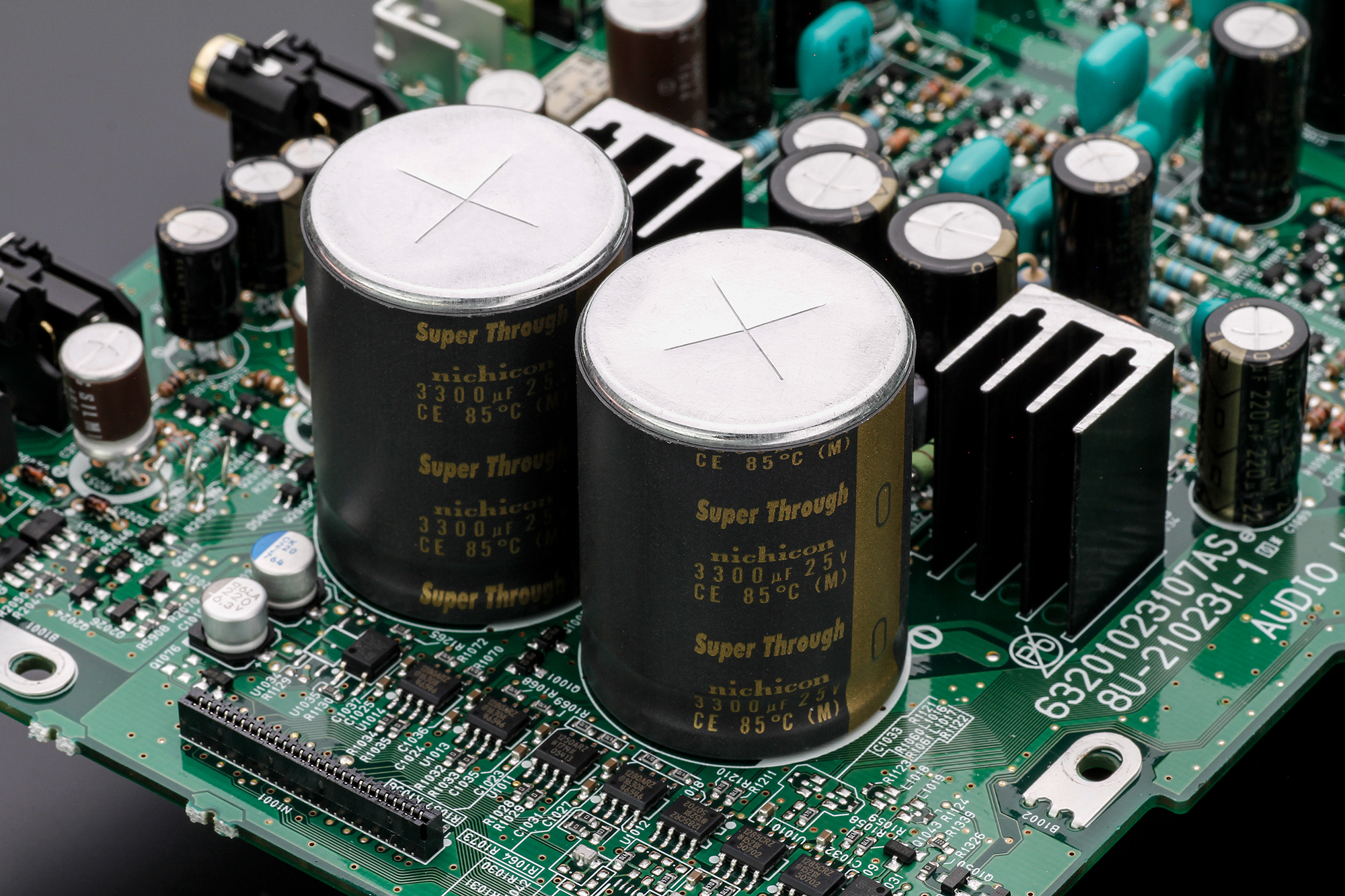
The company’s award-winning Premium Range 10 Series products and other premium components use something called Marantz Music Mastering technology, based on a Marantz original DSP and digital filter design. The version at this level is called Marantz Musical Digital Filtering, and the claim is for greater detail contributing to an even wider soundstage. It also offers a choice of two digital filter characteristics, one with a short impulse response, the other asymmetric. You can access these under the ‘Setup/Audio’ menus on the front panel via the remote control, switching between them with a short gap; we did a lot of switching during that Weavers CD, but darned if we could spot a difference, let alone pick a preference. You can also adjust the Lock Range between three widths, defaulting to narrow for CD (since Marantz is confident of its own output), while it defaults to wide for other inputs to avoid lock issues. You may hear a benefit from narrowing this, so long as the lock is held.
Rather more practical is the full-size headphone socket on the front, which is powered with a high-grade headphone circuit using the same Marantz HDAM S2 as is used for the main output buffer. We found the small volume control for this on the front panel a little fiddly, and it’s disappointing you can’t use the remote control for headphone level. But it delivered a full sound with just enough power to push quieter tracks up to top level with a pair of 55-ohm open headphones. It sounded more rounded than edgy, so that some detail was less evident, say, on kd lang’s The Air That I Breathe, than from an AU$3,000 integrated amplifier alongside, which was better able to reveal and focus this recording, but which then sounded too edgy when playing a 1980s’ recording like Aztec Cameras Somewhere In My Heart. This song sounded much more enjoyably full and bouncy with the ND8006’s choice of headphone sonic signature.
Verdict
With HEOS onboard to give app control, its array of online music sources plus multiroom abilities, plus the CD player and inputs to its DAC section, it is indeed hard to think of anything we feel to be missing from Marantz’s networking CD player and DAC and streamer and general all-round multiroom marvel. More to the point it proved itself to be of a high quality technically and musically, so that it delivers fine sound quality into amplification of its own level or, indeed, significantly above.
“A unique complete digital music source player”? Yes, we reckon the ND8006 ticks that box rather nicely.
Sound+Image is Australia's no.1 mag for audio & AV – sister magazine to Australian Hi-Fi and to the UK's What Hi-Fi?, and bestower of the annual Sound+Image Awards, which since 1989 have recognised the year's best hi-fi and home cinema products and installations. While Sound+Image lives here online as part of our group, our true nature is best revealed in the print magazines and digital issues, which curate unique collections of content each issue under the Editorship of Jez Ford, in a celebration of the joys that real hi-fi and high-quality AV can bring. Enjoy essential reviews of the most exciting new gear, features on Australia's best home cinemas, advice on how to find your sound, and our full Buying Guide based on all our current and past award-winners, all wrapped up with the latest news and editorial ponderings. Click here for more information about Sound+Image, including links to buy individual digital editions and details on how best to subscribe.
